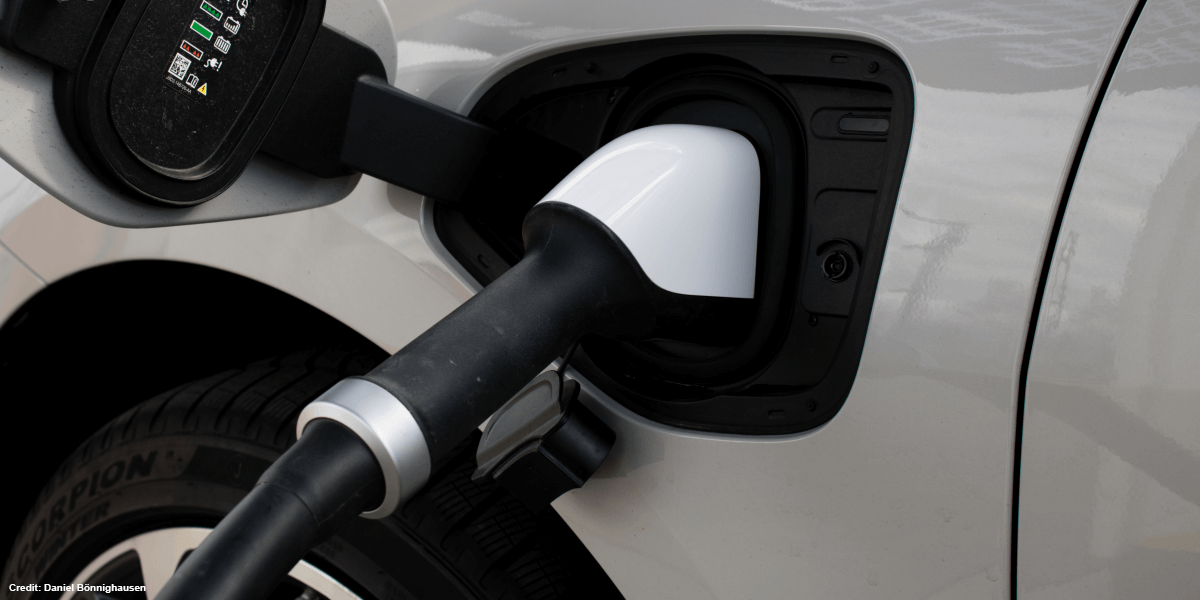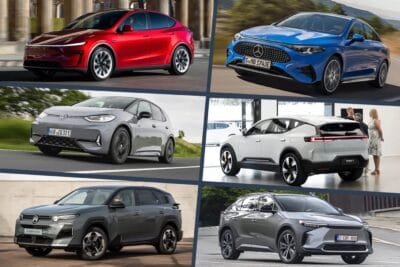10 tips on how to make it (or not) in the electric vehicle charging business (part 2/2)
After first giving us his polarising observations on how not to make it in the business of charging infrastructure in last week’s guest contribution, the mobility consultant and former Hubject CEO Thomas Daiber now delivers the five biggest Do’s for growth and lasting success.
***
The first part of this article, dealt with dead-ends common in the charging infrastructure business. However, while some market participants are finding it difficult to move from the starting line, other companies made massive progress in recent years. So we dedicated the following part II below to five critical success factors as observed by Thomas Daiber.
#1 Success factor: Asymmetrical competitors
About the separation of use and ownership of valuable assets and the bundling of new services
“We are the Airbnb of the charging infrastructure industry.” – Charging infrastructure executive in fundraising pitch
The comparison to the rising sharing economy with its billion-dollar revenue streams is present in many industries. Truth is: digitalisation enables the shared utilisation of valuable assets without the necessity to own them. This access-over-ownership model is a universal driver of growth.
The idea cannot only be applied to the use of third-party charging stations and e-mobility providers. The expansion of one’s network via the aggregation of other CPOs is already a market standard required if you want to be competitive. Sole EMP providers and SaaS- corporations with an international market presence have gained a considerable number of users without owning a single charging station themselves.

Their central KPIs are not customer acquisition costs or pure user growth. In the digital realm, brand loyalty is still weak. And in the given, young market with a range of fragmented providers, differentiated by weak USPs only, users are likely eager to switch. On top of that, early EV adopters seem to be witty and price sensitive. Therefore, low churn rates and the associated long-term loyalty of customers are the interesting parameters.
In the future, bundling non-industry digital services around the charging process will play a much more significant role. Some companies have already successfully expanded their offerings to include hotel bookings and other digital value-added services such as retail loyalty programs. These are exciting solutions that offer new benefits and open doors to new marketplaces while strengthening the customer relationship for product and brand. There are more and more innovative companies in the market that see EV charging only as a gateway to significantly broader revenue streams.
#2 Success factor: The young farmers of the network economy
About harvesting seeds early with the goal to generate network effects
There was a time before the separation of network ownership and electricity sales in the energy industry. Although the so-called unbundling laid the foundation for competition in the private sector several decades ago, many energy suppliers still trade and think locally and territorially. The interaction between competing regional charging station operators with a municipal background is sometimes comparable to the non-attack agreement of the inglorious football match between Austria and Germany (“Disgrace of Gijon”) at the 1982 FIFA World Cup. In this match, which has gone down in history, the teams both agreed on keeping the ball in their half in a simple collective aim to ensure the advancement of both teams to the next round. Although it ended 1-0 for Germany, there was nothing gained in this game for either side in the long run.
Territorial thinking drives market fragmentation and prevents scaling
The old way of market partitioning has also cast its shadow on the charging infrastructure business with its established roots in the energy industry. In addition to China, Germany still leads the disreputable hit list with its hundreds of CPOs. Most of them are small to medium-sized utilities with such a low number of charging points, it puts the company’s economic intention in question (compare the public charging tunnel vision in pt. I).
Similar approaches can also be observed in the automotive sector. Despite the common international presence of car manufacturers and the supplier industry, they usually base their charging solutions on proprietary offers of local service providers. For electric vehicle owners, this means that in the worst case, the risk of not being able to charge with their charging card or app increases as soon as they cross a city-state or border, even though the corresponding charging stations are designated as part of the network.

TAKE-AWAY NO. 3 – SCALING AND MARKET EXPANSION
Standardization triggers the network effect
This situation leads to a competitive advantage for the new OEM challengers led by Tesla, and other market participants with a software development background. These companies understood from the start that you could only scale if you unify your value-added services into one integrated service portfolio with consistent user experience – no matter the customers’ physical location. The extent of the significance of this know-how advantage will become apparent in the next few years. Some of the biggest successes in our younger history are based on that thought – products like iPhone function the same way all around the world.
Fortunately, there is already a consensus that charging electric vehicles has little in common with trading regular commodities. Selling the kilowatt-hour with the goal of the highest arbitrage is if at all, a subdiscipline of a multi-layered digital service market. Most charging services can be broken down into functionally networked individual modules: we can use public charging as an example, in the form of searching, finding, navigating, charging and paying. At this point, I will save you from further differentiation in the cosmos of ad-hoc and contract-based charging, analogous to German and European funding guidelines.
Close proximity to the digital economy thus characterises current and future business models around the charging of electric vehicles.
As transport and digital services merge, crossing national borders is the nature of things.
If you agree with the above statement, then this advice will not come as a surprise to you: develop your business early on at a national and international level so it can grow organically with your customers. This is even more important for those who want to build a charging network or a charging community, in which the individual value of the service increases with the quantity and quality of both components: consumers and stations (this is also known as the “network effect”).
Some leading companies in the charging sector, which in recent years have experienced growth rates of around 50 to 150% per year, have taken advantage of this effect from the beginning. At a time when they were still employing well under ten people, these “young farmers” have already planted the first seeds internationally, which are now bearing fruit and aggregating a critical mass for the self-accelerating network effect.
#3 Success factor: The new enablers
About using the support of (large) companies instead of competing with them
Let us stick to the soccer metaphor: in the hype market of electromobility, everyone wants to score the goals first, to shine in front of the fans. However, as the first part of the article has shown, the apparent protagonists of this young market still have a tough time managing to do so. Occasionally they are oversaturated, untrained or have too many other interests besides soccer.

Maybe it makes more sense to adopt the role of the coach to bring new life into the multi-million-euro star players.
This is the approach utilised by more and more successful technology and service companies in the charging infrastructure market. As pure “B2B-Enablers” they will not be noticed at all or only peripherally by electric car drivers. So if we assume, for example, that in the longterm the manufacturers of electric vehicles will play a role in the charging infrastructure market simply because of their historical market power and proximity to the end-users, you can take advantage of this circumstance. You can support them to make their first steps in this new market and grow alongside them.
That way, former competitors become strong partners. And due to the market remaining small, the decision-making paths of large corporations are still comparatively manageable. If you manage to succeed in sending these partners onto the pitch, your customers will win the championship while you are standing on the sideline. And as you know, the salaries of successful coaches like Pep Guardiola are sometimes higher than those of most ballplayers.
#4 Success factor: The charging-geeks
About specialists, who obtained technical niches at an early stage
Turning away from the ceded CPO and EMP paths, highly specialised technology firms have focused on the occupation of horizontal niches. The aim of the exercise is to address targeted areas with high technical complexity and scarce expertise instead of all-encompassing one-stop-shop offerings. In those market sectors, where 99% of market participants are afraid to enter, these “charging geeks” are in their element. The spectrum ranges from companies in the field of vehicle-to-X (V2X), hardware components and controller developers to API standardisation service providers around regarding topics such as plug-and-charge or calibration law.

In many cases, the current market potential is still limited, which is the reason for the low competitive pressure. In the long term, however, a dominant market position in a horizontal market segment could be significantly more profitable than a minimal share of an overpopulated vertical segment. This is a good strategy, especially when it comes to system- critical factors in the value creation that sooner or later cannot be by-passed.
#5 Success factor: The mainstream
About the three best-practice business approaches
If we exclude companies that offer hardware devices such as wallboxes and charging stations and add a slightly simplified perspective, most leading charging infrastructure companies can be assigned to one of the following three philosophical approaches. Although it can be dangerous to follow mainstream trends, they are at least relevant to the overall understanding of the market:
1. Location, location, location
Battle for the best locations in the transaction business of fast and ultra-fast DC charging
Let us start with those who identified charging as an investment-intensive transaction business. Similar to the real estate industry, the level and predictability of sales are considered a direct consequence of the location’s attractiveness. The quality of the site is therefore even more relevant than the quality of the product itself (a prominent example of this is McDonald’s). For this reason, many of these companies are also less focused on technology development and ownership, such as software backend and hardware development companies. In addition to having deep pockets, much patience and management with spine enough are relevant attributes here. You can compare most of these business models to cases from investment construction with payback periods of 10 to 15 years.
2. SaaS platform business
Asset light software business with faster return on investment
The exact counter-design to the first approach is seen in software companies, who develop front and backend solutions for different use cases in the area of charging. Low marginal costs and high scalability allow significantly faster growth with a much lower burn rate. This innovation-driven business is much more popular with investors and venture capitalists due to its high scalability. Most SaaS players aim to reduce technical entry barriers as much as possible. The targeted technological lock-in makes it more and more expensive to migrate to other systems at a later point in time. You can compare this to well-known approaches from the ERP area, such as SAP or Salesforce, for example. Many of these companies see themselves as enablers and let their customers take care of business growth (see success driver #3).
What is the main weakness of this approach? It reduces the possibility of product and service differentiation; when a large part of the CPOs and EMPs are based on the white label solutions of relevant SaaS providers, the end customer has the choice between hundreds of almost identical solutions. Eventually, the only differentiator will be the logos and colours of the front ends.
3. Community business
Focus on end-customers is driving business through customer excellence and brand loyalty
The latter approach describes business models that place the focus on electric car drivers themselves. The more end-users you can unite and keep within your “charging community”, the more the revenue potential and value of the brand increases. Yet, there are still considerable differences in the charging business in the area of User Experience (UX). With price being the most prominent differentiation feature today, UX and customer obsession become drivers for low retention rates. Even long-time electric car drivers with industry experience and nerves of steel, find themselves occasionally in situations in which they would want Mark Zuckerberg, Larry Ellison or Elon Musk as a Phone-a-Friend lifeline to decipher the user guidance sudoku created by hardware and software developers.
If, on the other hand, charging at home, at work, and on the road can be solved so intuitively that regular consumers and petrolheads can also enjoy electric mobility, then the future will surely belong to them.
 About the author
About the author
After working for Daimler, EnBW and Porsche Consulting, Thomas Daiber was Managing Director of the roaming joint venture Hubject for several years. In spring 2019 he launched the training label MOBILITY MASTERS and founded the Cosmic Cat Group, which sees itself as an independent strategic consultancy and venture builder for new mobility. The Berlin-based company develops strategies, product concepts and expands entire organisations in all-new core disciplines of transport.


 About the author
About the author


0 Comments